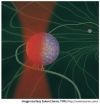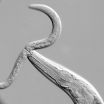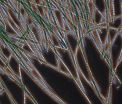Vaginal delivery is the safest option for women with pelvic girdle pain
2013-01-17
(Press-News.org) Caesarean section increases the risk of persistent pelvic girdle pain after delivery compared with vaginal delivery, according to a new study from the Norwegian Institute of Public Health.
Caesarean section rates are increasing worldwide, and this trend has partly been explained by women's requests for planned caesarean section without a medical reason. Pregnancy-related pelvic girdle pain has been associated with increased preference for caesarean section and with increased planned caesarean section rates.
"Some women with severe pelvic girdle pain might fear that a vaginal delivery will be too difficult or painful, or will worsen the condition after delivery – even though scientific evidence is lacking", says Elisabeth K. Bjelland, who is a postdoctoral researcher at the Institute's Division of Mental Health and lead author of the study.
Knowledge about how caesarean section affects prognosis of pelvic girdle pain is therefore needed. The purpose of this study was to investigate the relationship between mode of delivery and the persistence of pelvic girdle pain six months after delivery.
In this follow-up study, 79.9% of women had unassisted vaginal deliveries, 6.7% had instrumental vaginal deliveries (by vacuum or forceps), 7.2% had emergency caesarean sections and 6.2% had planned caesarean sections.
Doubles the risk of pain after delivery
After taking a number of other factors into account, the results showed that:
Planned caesarean section was associated with a two- to threefold increased risk of severe pelvic girdle syndrome (severe pain over the frontal part of the pelvis and on both sides of the rear part of the pelvis) six months after delivery.
In women who used crutches in pregnancy, both emergency and planned caesarean section was associated with severe pelvic girdle syndrome six months after delivery.
Instrumental vaginal delivery was also associated with an increased risk of pelvic girdle syndrome six months after delivery.
"Previous studies have reported that patients with prolonged or severe pain are at increased risk of chronic pain after surgery. One explanation may be that pain influences the central nervous system in such a way that the pain inhibition systems become less effective. Therefore, women with severe pelvic girdle pain during pregnancy may be more vulnerable to the pain associated with caesarean section, compared with women without pelvic girdle pain", explains Bjelland.
Clinical advice
When deciding the mode of delivery, clinicians should be aware of the increased risk of non-recovery after caesarean section among women with severe pelvic girdle pain.
"Our findings, which support previous assumptions, do not indicate that caesarean section represents a benefit for the process of recovery from pelvic girdle pain. If there are no medical reasons for a caesarean section, the findings suggest that vaginal delivery is the safest option for women presenting with severe pelvic girdle pain", advises Bjelland.
###
About the study
The researchers included 10 400 women in the Norwegian Mother and Child Cohort Study who had reported pelvic girdle syndrome in pregnancy week 30. They used questionnaire data from weeks 17 and 30 of gestation and six months after delivery. The data files were linked to the Medical Birth Registry of Norway. The study was conducted in close collaboration with senior researcher Malin Eberhard-Gran and researchers from the Oslo University Hospital.
Reference
Bjelland E.K., Stuge B., Vangen S., Stray-Pedersen, B. and Eberhard-Gran, M. Mode of delivery and persistence of pelvic girdle syndrome 6 months postpartum. Am J Obstet Gynecol (2013); 208. END
ELSE PRESS RELEASES FROM THIS DATE:
2013-01-17
To live is to move. You strike to swat that irritable mosquito, which skilfully evades the hand of death. How did that happen? Who moved your hand, and what saved the mosquito? Enter the Molecular Motors, nanoscale protein-machines in the muscles of your hand and wings of the mosquito. You need these motors to swat mosquitoes, blink your eyes, walk, eat, drink... just name it. Millions of motors tug as a team within your muscles, and you swat the mosquito. This is teamwork at its exquisite best.
Paradoxically, a weak and inefficient motor (called dynein) is the one that ...
2013-01-17
Nearly 200 000 light-years from Earth, the Large Magellanic Cloud, a satellite galaxy of the Milky Way, floats in space, in a long and slow dance around our galaxy. Vast clouds of gas within it slowly collapse to form new stars. In turn, these light up the gas clouds in a riot of colours, visible in this image from the NASA/ESA Hubble Space Telescope.
The Large Magellanic Cloud (LMC) is ablaze with star-forming regions. From the Tarantula Nebula, the brightest stellar nursery in our cosmic neighbourhood, to LHA 120-N 11, part of which is featured in this Hubble image, ...
2013-01-17
Researchers have identified a complex of proteins that promotes the growth of some types of colon and gastric cancers, and shown that medications that block the function of this complex have the potential to be developed into a new treatment for these diseases.
The complex of proteins, known as mTorc1 (mammalian target of rapamycin complex 1), has previously been implicated in the development of some other cancers but this is the first time it has been shown to promote the growth of colon and gastric cancers that are associated with inflammation.
Dr Stefan Thiem and ...
2013-01-17
Every 30 seconds somebody in the world is amputated as a consequence of foot complication due to diabetes. A new study at Sahlgrenska Academy, University of Gothenburg, Sweden, confirmes that shoe inserts, podiatry, regular checkups and other simple interventions can reduce the number of amputations by more than 50%.
Orthotic researchers at Sahlgrenska Academy, University of Gothenburg, have studied diabetic foot complications ever since 2008. They have focused on protecting the foot from overloading the foot sole in order to minimize the risk of ulcers, which may eventually ...
2013-01-17
This press release is available in German.
Researchers in the group of Ralf Sommer at the Max Planck Institute for Developmental Biology in Tuebingen, Germany, have for the first time been able to identify neuronal correlates of behaviour by comparing maps of synaptic connectivity, or "connectomes", between two species with different behaviour. They compared the pharyngeal nervous systems of two nematodes, the bacterial feeding Caenorhabditis elegans and the predator/omnivore Pristionchus pacificus and found large differences in how the neurons are "wired" together.
A ...
2013-01-17
A study in The Journal of General Physiology examines the consequences of muscle activity with surprising results, indicating that the extracellular accumulation of potassium that occurs in working muscles is considerably higher than previously thought.
Muscle excitation involves the influx of sodium ions and efflux of potassium ions. Although the fraction of ions that cross the muscle membrane with each contraction is minute, repeated activity can lead to substantial changes in the intracellular and extracellular concentrations of sodium and potassium ions. The extent ...
2013-01-17
Cyanobacteria belong to the Earth's oldest organisms. They are still present today in oceans and waters and even in hot springs. By producing oxygen and evolving into multicellular forms, they played a key role in the emergence of organisms that breathe oxygen. This has, now, been demonstrated by a team of scientists under the supervision and instruction of evolutionary biologists from the University of Zurich. According to their studies, cyanobacteria developed multicellularity around one billion years earlier than eukaryotes – cells with one true nucleus. At almost the ...
2013-01-17
People who take cocaine over many years without becoming addicted have a brain structure which is significantly different from those individuals who developed cocaine-dependence, researchers have discovered. New research from the University of Cambridge has found that recreational drug users who have not developed a dependence have an abnormally large frontal lobe, the section of the brain implicated in self-control. Their research was published in the journal Biological Psychiatry.
For the study, led by Dr Karen Ersche, individuals who use cocaine on a regular basis underwent ...
2013-01-17
(Jena) The planet Earth will die – if not before, then when the Sun collapses. This is going to happen in approximately seven billion years. In the universe however the death of suns and planets is an everyday occurance and our solar system partly consists of their remnants.
The end of stars – suns – rich in mass is often a neutron star. These "stars' liches" demonstrate a high density, in which atoms are extremely compressed. Such neutron stars are no bigger than a small town, but heavier than our sun, as physicist PD Dr. Axel Maas of the Jena University (Germany) points ...
2013-01-17
Dietary changes since the early 1960s have fueled a sharp increase in the amount of mined phosphorus used to produce the food consumed by the average person over the course of a year, according to a new study led by researchers at McGill University.
Between 1961 and 2007, rising meat consumption and total calorie intake underpinned a 38% increase in the world's per capita "phosphorus footprint," the researchers conclude in a paper published online in Environmental Research Letters.
The findings underscore a significant challenge to efforts to sustainably manage the ...
LAST 30 PRESS RELEASES:
[Press-News.org] Vaginal delivery is the safest option for women with pelvic girdle pain





